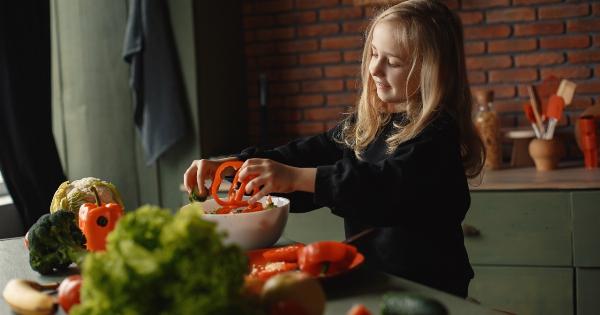Mealtime with kids can often feel like a chaotic experience. From picky eaters to tantrums, it can be challenging to create a calm and enjoyable atmosphere around the table.
However, with a few smart strategies and a bit of creativity, you can reduce mealtime chaos and turn it into a pleasant and bonding experience for the whole family. In this article, we will explore ten effective strategies to help you create a peaceful and enjoyable mealtime routine with your kids.
1. Establish a Consistent Mealtime Routine
Children thrive on routine, and having consistent meal times can help set expectations and create a structured environment. Establish regular meal times and stick to them as much as possible.
This consistency will help children anticipate and prepare for meals, reducing anxiety and chaos.
2. Create a Pleasant Dining Environment
The dining environment can significantly impact the mood and behavior of children during mealtime. Set the table with colorful and appealing tableware, and make mealtime a pleasant sensory experience.
Dim the lights, play soft music, and create a calm atmosphere that encourages relaxation and enjoyment.
3. Involve Children in Meal Planning and Preparation

Engaging children in meal planning and preparation can be a fun and educational activity. Allow them to choose a meal or suggest ingredients for a dish.
Encouraging their involvement gives them a sense of ownership over the meal and increases their willingness to try new foods.
4. Offer a Variety of Nutritious Foods
Providing a diverse range of nutritious foods ensures that your child receives a well-balanced diet. Introduce new fruits, vegetables, grains, and proteins regularly.
Offer small portions of new foods alongside familiar ones, making it less intimidating for children to try new things.
5. Avoid Battles over Food
Forcing children to eat certain foods or finish everything on their plate can lead to power struggles and negative associations with mealtime. Instead, respect their individual appetites and preferences.
Encourage them to taste new foods, but don’t force them to eat anything they don’t like. Allow them to develop a healthy relationship with food at their own pace.
6. Set Reasonable Expectations
Setting realistic expectations can prevent frustration and chaos during mealtime. Understand that young children have small stomachs and may not eat as much as adults. Don’t pressure them to finish their entire plate.
Focus on establishing a positive and relaxed environment rather than making sure they consume a specific quantity of food.
7. Be a Role Model
Children are more likely to try new foods and develop healthy eating habits if they see their parents and caregivers enjoying nutritious meals. Be a positive role model by eating a variety of foods and demonstrating enthusiasm for healthy choices.
Children often imitate the behaviors they observe, so make sure to practice what you preach.
8. Turn Off Screens and Minimize Distractions
Electronics, such as TVs or tablets, and other distractions can disrupt the focus on food and family during mealtime. Encourage device-free meals and create a tech-free zone at the dining table.
This will allow everyone to fully engage in conversation and develop stronger connections while enjoying their meal.
9. Make Mealtime Fun and Engaging
Add an element of fun and creativity to mealtimes to make them more engaging for children. Use cookie cutters to shape sandwiches, arrange fruits and vegetables in interesting patterns, or create funny faces out of nutritious ingredients.
The more enjoyable and visually appealing the meal, the more likely kids will be excited to participate.
10. Keep Conversations Positive and Engaging
Encourage meaningful conversations during mealtime by asking open-ended questions and showing genuine interest in your child’s day. Avoid negative or critical discussions that might create a tense atmosphere.
Make the most of this dedicated family time by fostering positive and engaging conversations that improve communication and connections.























